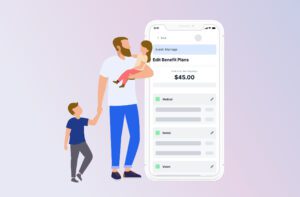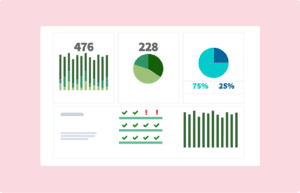Share
KEY TAKEAWAYS:
- Health literacy includes both “personal” and “organizational” opportunities
- Employers must be prepared to help workers understand healthcare benefits and terminology
- Employees who understand their benefits are more satisfied, healthy, and financially stable
Employers play a big role in health literacy at the organizational level, but that work is too often neglected. HR professionals need to learn enough about healthcare options, terminology, and resources to assist other employees.
- More than a third of workers say that they don’t fully understand their healthcare coverage
- Nearly two-thirds said their employer doesn’t act as a resource for healthcare-related questions
Through better and more consistent communication and education, HR can elevate the overall benefits experience for all employees. This leads to higher participation levels and greater confidence/satisfaction amongst workers.
What is Health Literacy?
Historically, health literacy was defined as the degree to which individuals have the capacity to obtain, process, and understand basic health information and services needed to make well-informed health decisions.
As recently as 2020, the CDC updated its definition of health literacy as a multi-pronged approach.
- Personal health literacy “is the degree to which individuals have the ability to find, understand, and use information and services to inform health-related decisions and actions for themselves and others.”
- Organizational health literacy “is the degree to which organizations equitably enable individuals to find, understand, and use information and services to inform health-related decisions and actions for themselves and others.”
The previous definition focused on “understanding” healthcare and making “appropriate” decisions. In hindsight, that wording was problematic. With a renewed emphasis on public health, the 2020 update wants people to be able to use available resources to make well-informed decisions.
The new definition:
- Emphasizes people’s ability to use health information rather than just understand it
- Focuses on the ability to make “well-informed” decisions rather than “appropriate” ones
- Acknowledge that organizations have a responsibility to address health literacy
When business organizations (employers) provide healthcare benefits, they have the opportunity to help staff understand and access healthcare resources. Like a car owner’s manual in the glovebox, it’s okay if the majority of healthcare paperwork gets filed away for emergencies. What’s more important is that employees should understand their key benefits and available resources. When questions arise, employees should know where to find help.
Why is Health Literacy Important?
The health literacy of your workforce has an indirect but significant impact on your business. How many employees understand healthcare terminology? Make sure that your workers aren’t confused about their health insurance coverage.
Employee health
Your workforce can’t focus on productivity if they’re struggling with untreated illnesses. Many chronic problems get worse without proper treatment. Severe health issues can lead to early retirement and long periods of absence.
This also plays a part in mental health, as employees with more on their mind are more distracted and less productive.
LEARN: Employee Benefits Management: Getting the Most Out of Your Benefits Plan
Employee satisfaction
Healthcare benefits are great tools for recruiting, retention, and overall employee satisfaction. Employees need to understand (and take advantage of) their benefits in order to appreciate them. Workers can’t be satisfied with their healthcare coverage if they don’t know anything about it besides the cost.
READ: De-Stressing Benefits: Helping Employees Prepare for Open Enrollment
Financial health
Out-of-pocket healthcare costs are expensive. Your benefits program may include a range of options for telemedicine, urgent care, and non-emergency appointments. When policyholders understand their coverage and options, they can avoid many unnecessary expenses like out-of-network care.
Benefits participation
If your benefits program is too confusing or inaccessible, then it’s not giving your employees a reason to stay on board. Workers can’t take advantage of preventative care and wellness programs if they don’t know where to look.
DISCOVER: How HR Technology Elevates Employee Benefits Enrollment
What Can Employers Do to Improve Health Literacy?
HR staff should already be helping employees take advantage of their benefits, but you can go further by researching the other resources in your community. Make sure that your training and onboarding programs go beyond the bare minimum of registration paperwork.
Know your employees’ wants and needs
Does your staff worry about the healthcare needs of dependents? More than half of Americans worry that they won’t be able to achieve financial security for retirement. Learn about your workers’ concerns and promote a culture of feedback with HR surveys.
Start with the basics
You probably already have employees choose their benefits policies during onboarding. Make sure you also provide helpful resources for anyone who doesn’t already know the terms like “deductibles” and “out-of-pocket limits.”
Communicate year-round
Do you know the best way to de-stress open enrollment periods? Make health literacy a year-round program, not a last-minute sprint at the annual deadline. Remind workers about flu season, vaccinations, and fundamentals like hand-washing.
Offer education and training
Shouldn’t they teach about the healthcare system in high school? Unfortunately, insurance and benefits can be intimidating for people without prior experience in healthcare. Use a Learning Management System for meaningful learning with optional healthcare-related refreshers.
Utilize HR technology
Take advantage of mobile-friendly benefits administration portals to make benefits easily accessible. Employees should be able to check their coverage and quickly review company procedures on issues like FMLA leave.
Partner with local health orgs
Healthcare providers also want to promote healthcare literacy. Ask about hosting guest speakers on topics like preventative care and nutrition. Connect your own staff with resources like free flu shots and on-site screenings.
Discover how Netchex can help your improve health literacy amongst your employees:
Related articles

How to Improve Your Open Enrollment Communications in 2025?

Payroll & Benefits Compliance: A No-Panic Playbook for HR Teams

Benefits Administration

